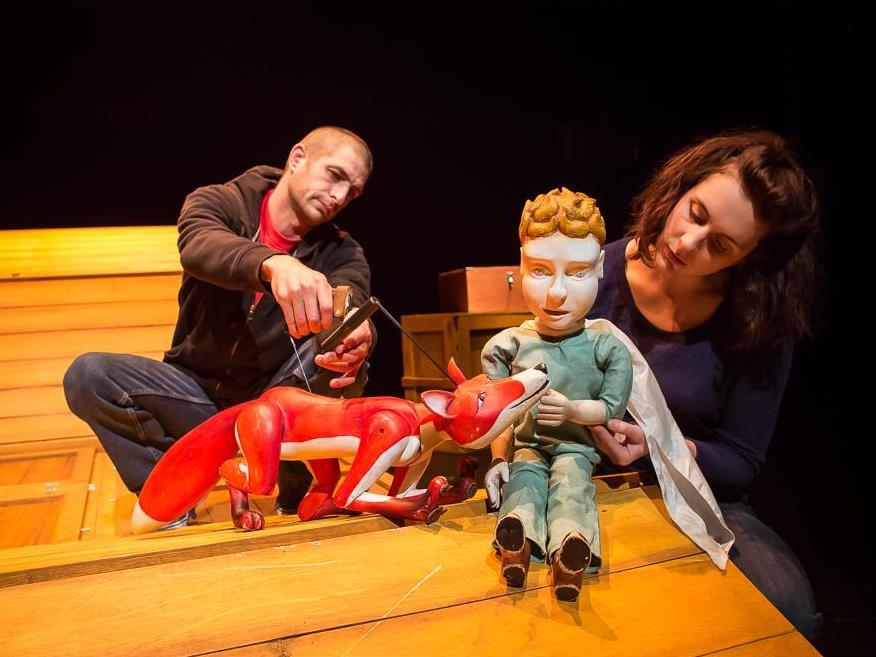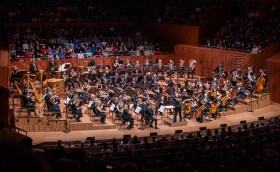Spare Parts Puppet Theatre’s The Little Prince. Photo credit: Jessica Wyld
Antoine de Saint-Exupéry’s novella, The Little Prince, has been adapted many times since its publication in 1943, transformed into radio plays, recordings, cartoons, ballet shows, operas and theatre. It tells the fable of a boy who leaves his planet (or asteroid, more accurately) and travels to earth, encountering others, engaging in quite dark and complex philosophical trysts, forming friendships, and learning a great deal about himself and the universe. Though ostensibly a children’s novella, the story explores very adult concepts, which makes it an ambitious work for Spare Parts to adapt into a puppet show for 4-12 year olds.
Oddly, Simon Clark’s adaptation has the show structured as a story within a story. Two workers (Jacob Lehrer and Jessica Lewis) unpack a large crate in which the props and set for The Little Prince are stored. After some resistance from Lehrer’s character, he inexplicably relents to Lewis’s character’s curiosity, and the two begin acting the story out, the wooden boxes inside the crate unfolding to become landscapes and puppets, to reveal props, and, in a magical moment at the end, to form an airplane with a functioning propeller.
The motivation for structuring the show this way is not really clear. If the workers exist to help explain the story and make it more accessible for younger punters, they fail, only repeating what has just happened and doing little to explore the more oblique themes. The ‘real world’ and the world of the story mesh badly. And the worker characters are inconsistent and unlikable. If anything, the external story only serves to disrupt and take valuable time away from the story of The Little Prince itself, which is abridged here to fit into the 45 minute run time.
While it is amazing to watch Jiri Zmitko’s and Kipling Smith’s puppets and set unfold, particularly under Karen Cook’s delicate lighting and to the tune of Lee Buddle’s soundtrack, there is no doubt that a large portion of the younger audience are left more than perplexed by the events onstage – and not necessarily in a good way. Monday morning’s audience seem restless and unengaged.
Not everyone, however. During the question and answer session at the end, there is more than one question about whether or not The Little Prince dies in the end. ‘That was a weird ending,’ one boy declares. The actors cleverly don’t answer directly, encouraging the askers to interpret it for themselves.
And herein lies the strength of such ambition. While Spare Part’s adaptation perhaps doesn’t do the story as much justice as it could have, audience members not left behind are certainly left with something to think about.
Rating: 3 out of 5 stars
The Little Prince
Performed by Jacob Lehrer and Jessica Lewis
Director: Michael Barlow
Writer: Adaptation by Simon Clarke
Designer: Jiri Zmitko
Composer: Lee Buddle
Lighting Designer: Karen Cook
Puppet Construction: Jiri Zmitko and Kipling Smith
Production Manager: Karen Cook
Spare Parts Puppet Theatre, Short St, Fremantle
www.sppt.asn.au
Until July 19





